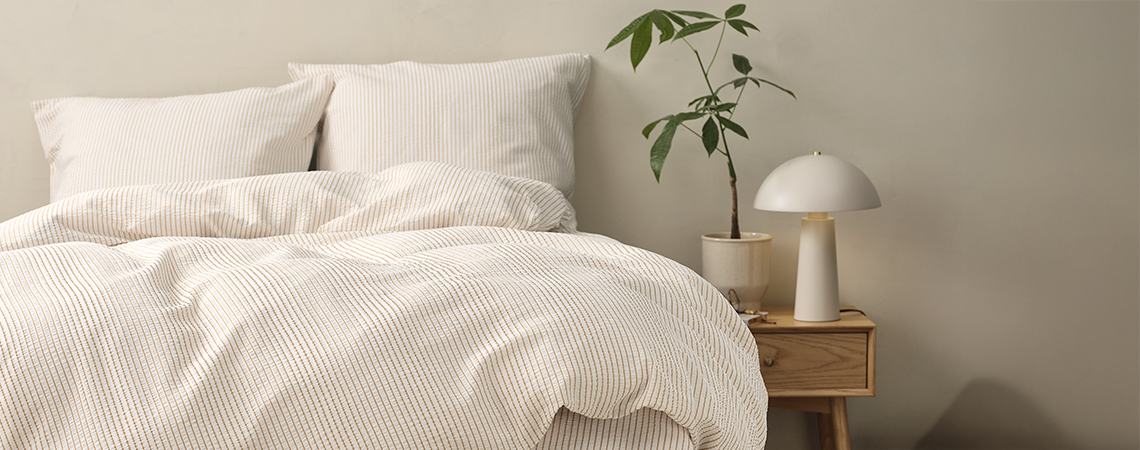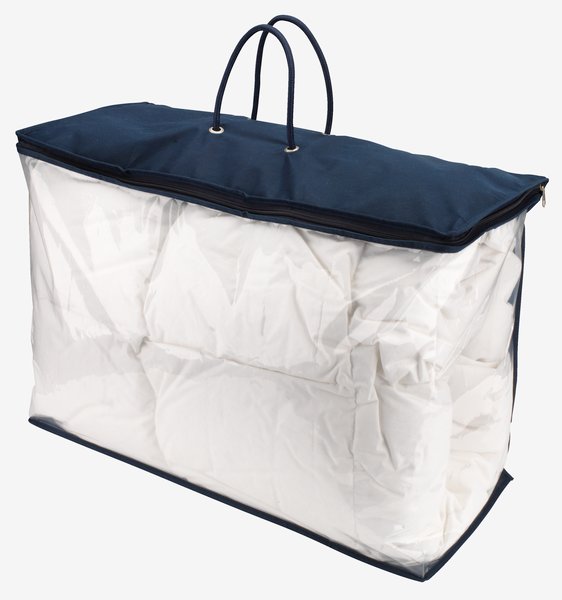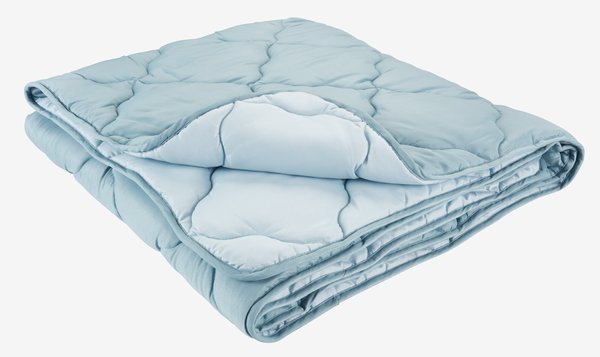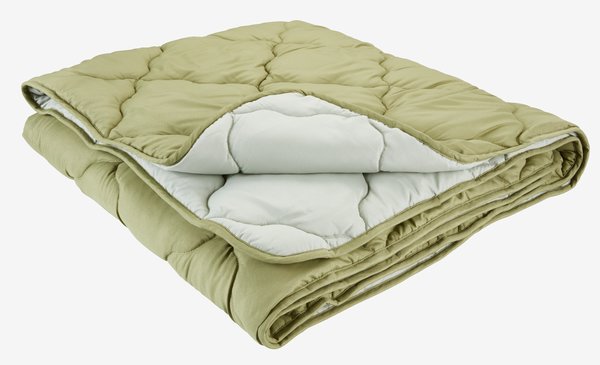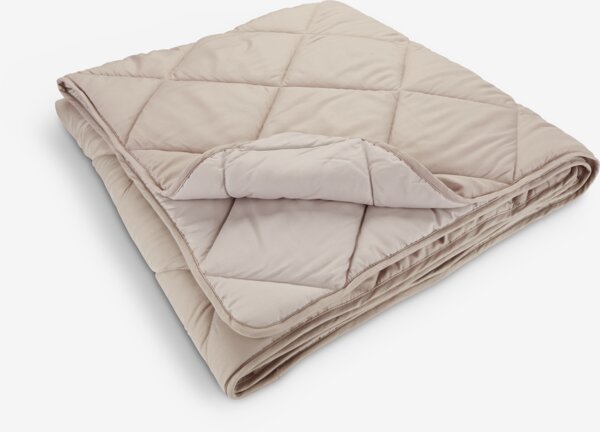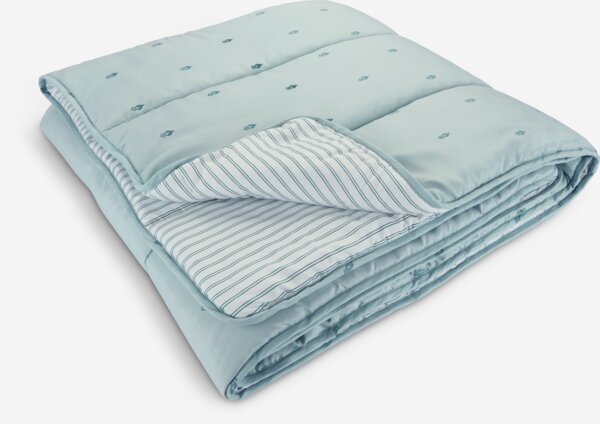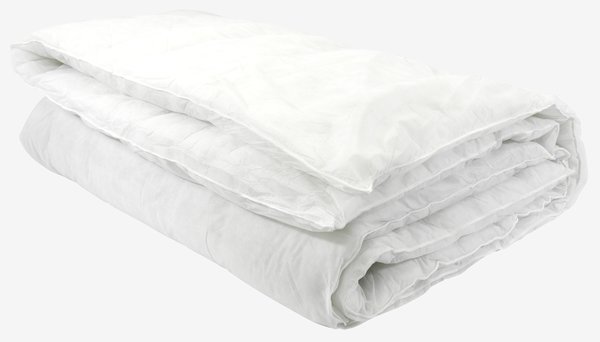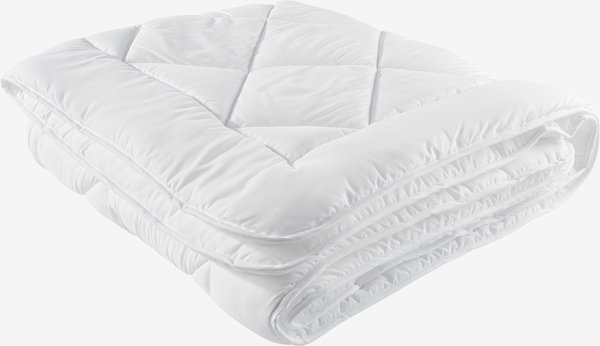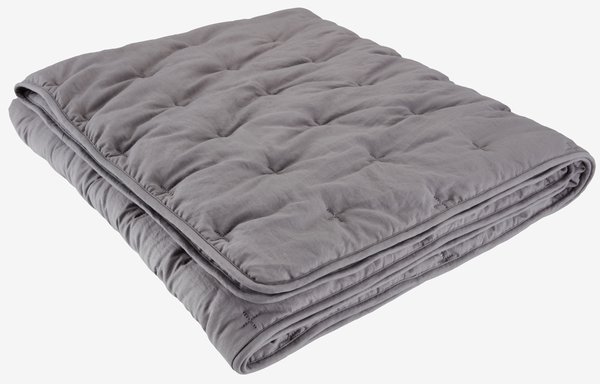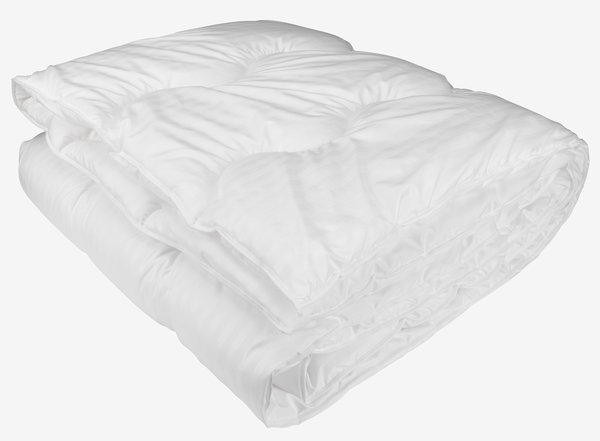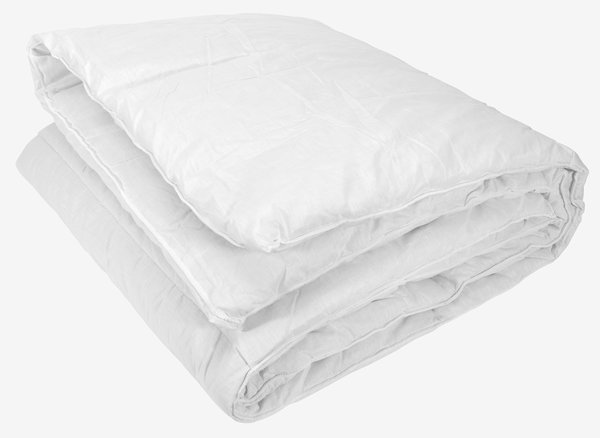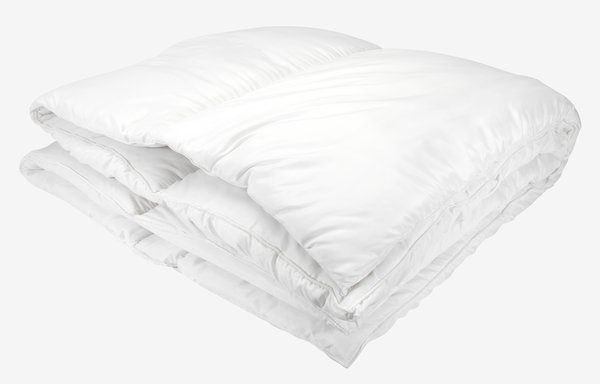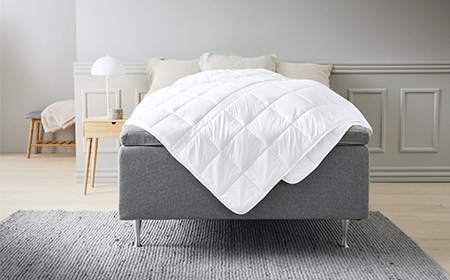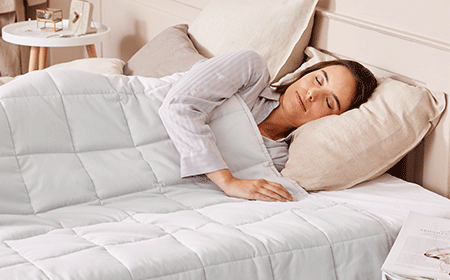If you’re looking for a new duvet and you’ve decided that you prefer natural filling, chances are you’re seeking a fluffy, comfortable, and soft natural duvet to keep you warm.
Assessing how well a natural duvet provides insulation – thereby keeping you warm – is primarily determined by its fill power, which means understanding this factor is essential for making the perfect choice for your needs. In this blog post, you’ll learn more about what fill power is and how to choose a natural duvet with the right fill power for you.
What is fill power?
The fill power of a duvet is a measurement used for duvets with natural filling such as down or feathers. It measures how much air the duvet can hold and how efficiently it traps heat to ensure optimal insulation, comfort, and warmth throughout the night. Please be aware that fill power applies only to duvets with natural filling, not to duvet with fibre filling.
The higher the fill power, the better the duvet is at trapping heat and keeping you warm. This means that a duvet with low fill power needs more filling to insulate well and keep you warm, while a duvet with high fill power can provide warmth with a low amount of filling. In JYSK, you’ll find duvets with a fill power rating between 200 and 1,100.
"It’s possible for you to get a cool duvet with high fill power. In that case, we’ve simply put less filling in it, and as a result, the duvet is not only cool but very light."
– Berit, Category Manager, JYSK
Before duvets with natural filling are sent to our stores and become available for purchase, a specimen of that particular model of duvet is sent to our labs for testing. This random sample testing is conducted on all natural duvets in our assortment. The testing is meticulous and results in the destruction of the duvet samples, but it ensures consistently high quality and safety of every natural duvet in JYSK.
Feathers, down, fill power and insulation
Three main factors affect the feathers and down fill power of a duvet: The species of fowl, the quality of the feathers or down, and their distribution within the duvet.
Duvets are available with down and feathers from ducks, Muscovy ducks, geese, and eider ducks, and there are major differences in how well these different natural fillings provide insulation.
Feathers provide the least insulation, while eiderdown is considered one of the warmest, lightest, and most insulating materials in the world. An eiderdown duvet will thus always have a higher fill power than a duck down duvet.
Eiderdown – A rare material
Due to its warmth and lightness, eiderdown is one of the finest and most expensive materials that can be used as filling in a duvet.
In contrast to duck and goose down, eiderdown is not a by-product of poultry production; eiderdown is gathered from the nests of wild eider ducks from places such as Iceland. The wild eider ducks pluck feathers from their chests and use them to build their nests. After the breeding season is over and the eider ducks have left their nests, the down can be collected.
How do I choose the right fill power for my duvet?
Fill power, overall quality, and price are closely tied together. Generally, the better the insulation properties of the filling, the higher the quality and price of the duvet. Before deciding which fill power is right for you, consider the quality range and price level you are interested in.
Finding the right fill power is about balancing the mix of filling material and cost. A duvet with a higher percentage of down than feathers will have a higher fill power, typically indicating higher quality, but it will also be more expensive. Down is generally more costly than feathers, so feathers are often added to keep the duvet affordable.
If you want to know about duvet costs in relation to fill power, check out our blog post: How much does a duvet cost?
Keep in mind that a duvet with low fill power will feel different from one with high fill power. A duvet with many feathers may feel less flexible and more robust due to the longer and less flexible feather shafts. On the other hand, a duvet with more down filling may feel more enveloping and flexible, as the lighter, smaller down clusters allow the duvet to shape itself to your body.
To learn all there is to know about choosing the right duvet, check out our ultimate guide: Which duvet should you choose?
